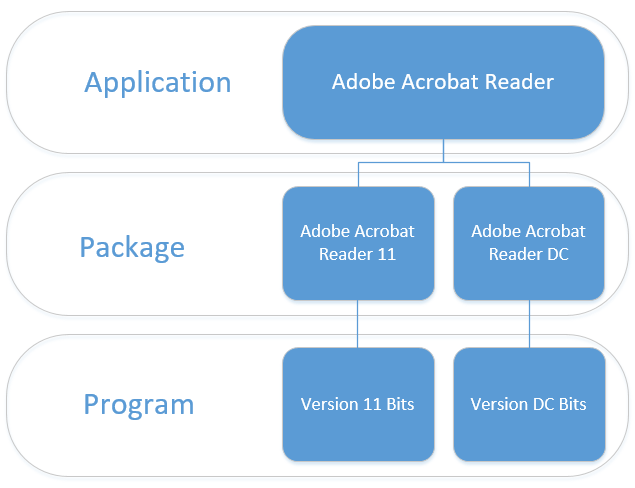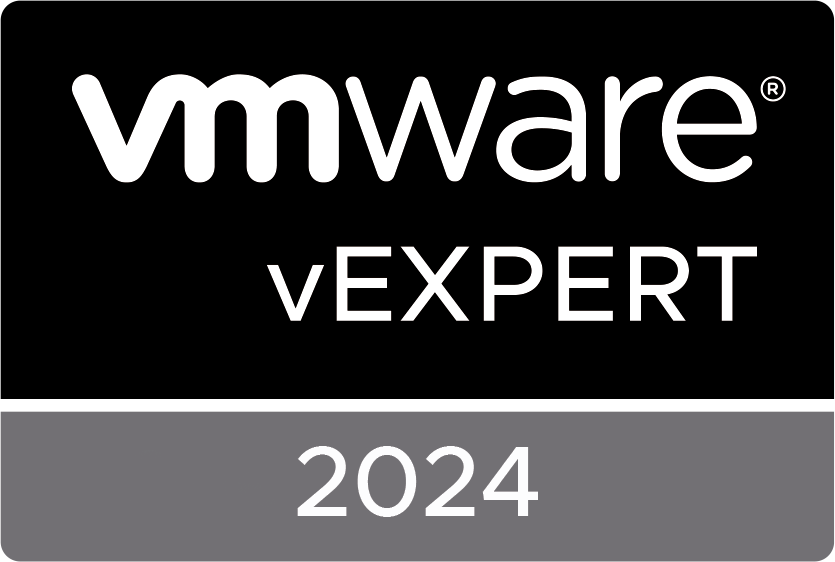As you might have seen, VMware released a brand new version of App Volumes. VMware introduces SAM (Simplified Application Management) into the product to redesign the whole process of Life Cycle Management. Surly that’s not the only update, so let’s take a look at the release notes to see what App Volumes 4 can offer you and share my opinion on it.
What’s New
Application Inventory
- Applications – Records that represent an application irrespective of its versions. You can create application records to manage a collection of related packages. Users, groups, computers, or organizational units can be entitled to receive one of the packaged versions.
- Packages – Virtual disks that store one or more programs required for an application to run. A single package can be delivered to multiple computers, and one or many users.
- Programs – Installed during the packaging process. When an application is assigned and a package is delivered to a desktop, these programs are then visible inside Windows under Programs and Features and often available from the Start Menu.
This, in my opinion, is something we all would have wanted from day one. With App Volumes 2.x I always had meetings, discussions and headaches on how to divide all the customers applications into different kinds of AppStacks and how to make it manageable for the IT admins.
This struggle has now been made so much easier and here is why.
- You’ll start off by creating an Application, in the picture below I take Adobe Acrobat Reader as an example. An application represents one or more packaged versions of software. Assignments are done at the application level to users, groups, computers or organizational units.
- After that you’ll create a package which represents the virtual disk (VMDK) with a version of that application. You need use a packaging VM to capture application bits to a virtual disk for distribution to users and computers. The capturing process is similar to creating AppStacks.
- After capturing the application the program is auto-generated. The name of the program is automatic, and executables and actual bits are captured during the package creation. The program may contain one or more application installers.

This means you no longer have to install multiple applications in one AppStack or one application in multiple AppStacks, although this is still possible my personal preference goes out to what is explained above.
As said, if you want to can still use App Volumes as you would in version 2.x. With version 2.x I’ve created the AppStacks, most of the times, based on departments for example Sales-, Finance or Marketing Apps. In this example I’ll take another approach for App Volumes version 4.
If you have a Horizon or Citrix RDS environment for production or maybe some legacy apps, you can use the concept below to create one application and install multiple applications in one package. This way your RDSH servers have a reduced amount of virtual disks attached and when these need to be updated, you create a new package that includes all updates, and distribute the entire package to your RDS environment.
Life-cycle Management
- Intent-based Assignments – Mark one of an Application’s packages as current to indicate the intended version for delivery.
- Life-cycle Stages – Designate the maturity of a package by setting it from New to Tested, Published or Retired.
- Application Owners – Assign active directory entities to indicate ownership to each Application.
- Application History – View a list of administrative actions that have been performed on an application and who performed them.
Great functions although almost all of them are administrative. If you mark an application’s package as CURRENT, the App Volumes Manager will deliver that package to the end users. It is possible to assign a specific package version to a different Active Directory group, for instance a testers group. You can do this be selecting the package assignment type during the assignment process.
Personal I would love to see a more interactive use for the Life-Cycle stages. Something like the possibility to assign different AD objects per stage. So you can directly assign the package to users in a test group or production group.
New Agent and Package Format
- Improved Performance – App Volumes Agent now handles more package disks per user session.
- Package Notes – Keep track of a package details by noting any specifics steps or configurations after packaging an application.
- Improved Template Management – Template policy files (snapvol.cfg) have moved out of the template disk to the base image so that it may be updated easily when updating the Agent. Manager also provides an improved management interface for uploading and maintaining templates.
- Support for Windows 10, version 1909
This is huge! What VMware is saying, is that you no longer have a limit in the amount of virtual disks you can attach to a machine. Although this is something we all need to experience, I have good faith and hope we see some good increased performance during the login process, especially when using Writable Volumes.
The movement of the snapvol.cfg from the template disk to the base image is also really nice. This way you can manage the templates in a better and faster way, I’ll write an article on this shortly.
Upgrade from App Volumes 2.x – Manage App Volumes 4 and 2.x agent versions in the App Volumes 4 Manager. Deployments upgraded from App Volumes Manager 2.18 or later can view Volumes (2.X) in the navigation to access all the 2.x AppStacks and Writable Volumes. If necessary, new installations can enable this functionality under Advanced Settings. For more information about upgrading to App Volumes 4, see the VMware App Volumes 4 Installation Guide. You can access this documentation at VMware Docs.
So when you want to upgrade to App Volumes 4 you need to be at least at version 2.18. The upgrade is plain and simple, Laurens van Duijn (@ vDr.one) has already made an blog post with some great tips on how to do this. Check it out!
Conclusion
As you probably can imagine, I am super exited about the new version. I think App Volumes 4 is a big upgrade of the product I already loved. Looking forward to implement App Volumes 4 at customers and share my experience with the community. Stay tuned for new articles!
Het bericht App Volumes 4 is here! verscheen voor het eerst op Age Roskam.
The original article was posted on: ageroskam.nl







